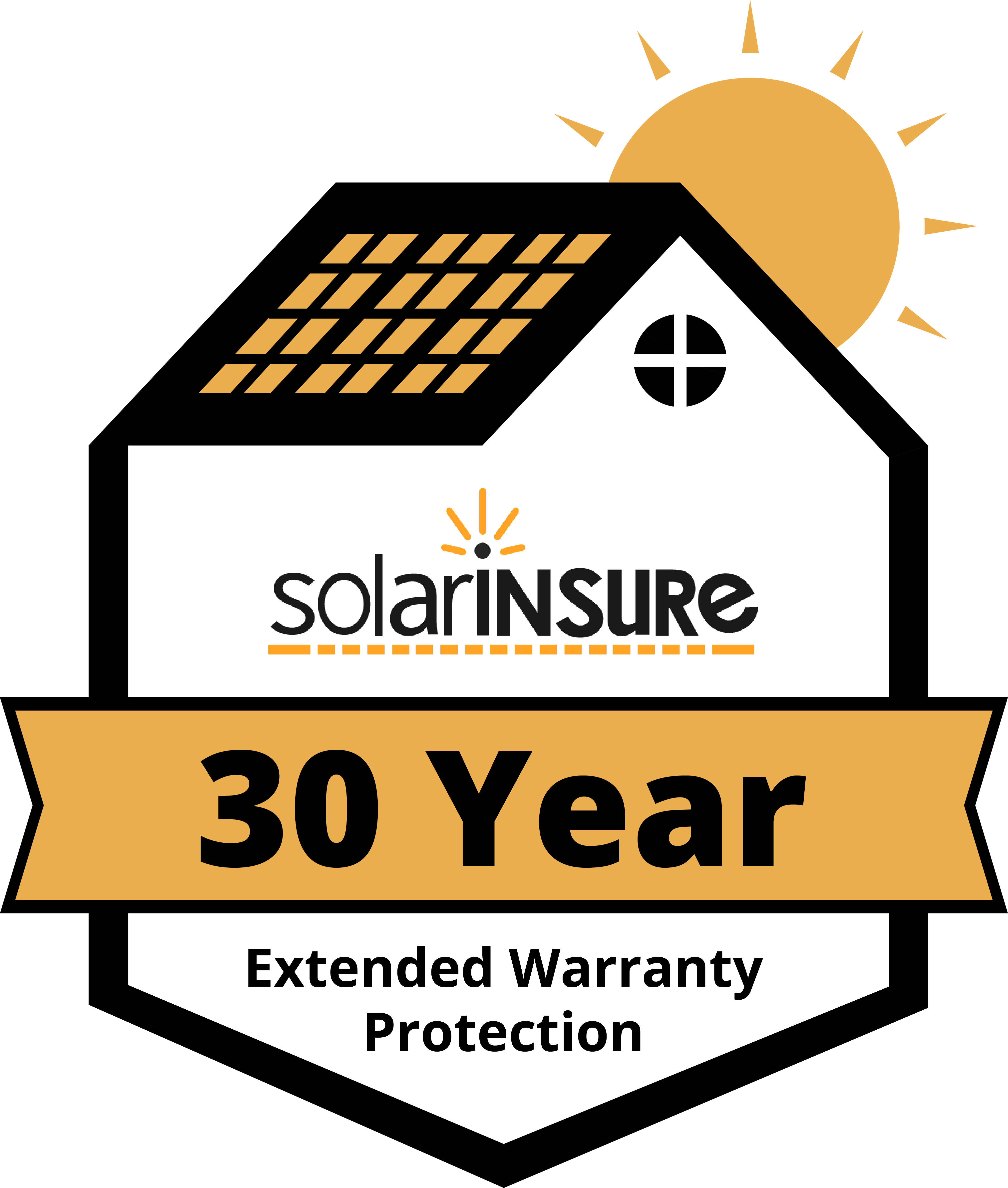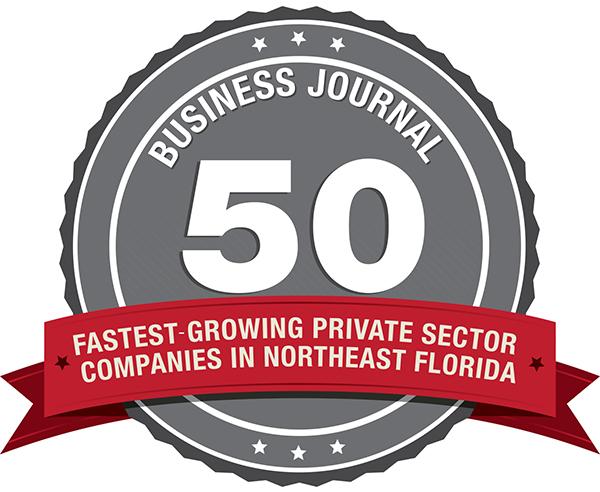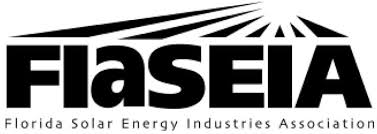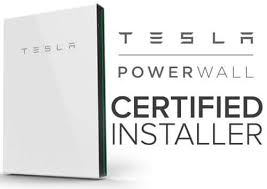Solar 101 For Homeowners


How does solar work?
Shopping for solar can be a daunting process, and the terms that get thrown around can seem intimidating at first. The goal of this guide is to break the process down into layman’s terms. Your best bet is to schedule a personal evaluation with one of our highly trained consultants, but this guide is a good place to start.
Sunlight hits the solar panels, and the photons generate DC current. Inverters convert the current from DC to AC, which is what you use in your home. During peak sun hours, your system typically generates more electricity than what you are using in your home. You will sell this excess back to the grid, and the utility company will credit you for it. Most utility companies in the area net-meter (JEA is the exception), which means they pay you what they charge you for the excess power. At night, your panels are no longer generating electricity, so you will draw from the grid.
During the spring and early fall, a system designed for a full off-set will produce enough electricity to generate credits on your electric bill. The concept is similar to “roll-over minutes.” During the winter and summer, you’ll consume the credits you accrued during the spring and fall.
System components
- Solar panels. We offer a variety of panels, and make recommendations based upon your goals. We offer SunPower, LG, Mission Solar, Canadian Solar, and other brands.
- Inverters. Our standard inverter is the Enphase IQ7Plus microinverter. We do install other inverters depending on the system, but the vast majority of our installs utilize Enphase microinverters.
- Racking system. The racking system attaches your panels to the roof. We engineer for 140 mph winds
- Electrical work. Some systems will require an electric panel upgrade, dependent upon system size and your utility company. A1A Solar is an electrical contractor, and all work is performed by employees.
Benefits of going solar
- Saving Money! The average homeowner will save $30,000-$50,000 over the life of their system. This is money you keep in your pocket, rather than hand over to your utility company.
- Increased property value! Homes with solar sell four times faster, and for more money than homes without solar.
- Energy independence! With solar, you are no longer at their mercy of the utility company, which may increase rates at their sole direction. Add batteries to the system, for real independence.
- Saving the planet! By going solar, you embrace the cleanest energy available in our area. No fossil fuels burned, zero emissions.
Solar energy is not new



Solar energy has grown in popularity in recent years. Yet despite its popularity, we are not new to using solar energy. In fact, people have been using the power of the sun for generations, whether hanging clothes outside for the sun to dry and sanitize them or planting a garden to use the sun’s rays to grow food. But, solar energy has been used in other ways long before modern solar panels were invented.
As early as 7th century B.C. humans used sunlight to light fires with magnifying glass materials. In 3rd century B.C., the Greeks and Romans used mirrors to harness solar power to light torches for religious ceremonies. In the late 1700s and 1800s, sunlight was sometimes used to power ovens for long voyages.
While we have used solar for generations, the power of the sun was mostly ignored in recent centuries with other forms of energy: coal, oil, nuclear, predominating. But the future is in clean energy so A1A Solar was founded in 2010 to provide highly qualified services in the design and installation of solar power plants for homes and businesses.

WHY DO WE DO WHAT WE DO?
The “what” is easy: A1A Solar makes happy customers by delivering solar plus storage solutions to our clients.
The “why?” Is more complicated. Owner Pete Wilking founded this company after serving as a Naval officer. He worked for another solar company in Jacksonville in operations and sales, before deciding he could do it better himself.
Filling a need
Pete believes first and foremost in a business model that makes customers happy. By delivering quality workmanship, the best materials, and excellent customer service, Pete believed that he could establish a company in Jacksonville that met a need. For over ten years, A1A Solar has steadily built a stellar reputation for quality and service.
Stewardship

We believe in the future of renewable energy, and that solar plus storage is an important step toward preserving the planet. The more companies and individuals takesteps to reduce their carbon imprint, the less fossil fuel is burned. Our local utility companies all use a mix of coal and natural gas. Florida Power and Light also uses nuclear energy. The less fossil fuel is burned, the better our environment will be.
<
The concept of stewardship is integral to the “why.” At A1A Solar, we believe in leaving the world a better place. Our ability to impact the world entire is limited, but we’re working to save it one rooftop at a time.
Independence
The ideas of liberty and freedom are wrapped into solar. In Florida, homeowners have no choice in utility companies. This means that depending on where you live, you will pay what the utility company tells you to pay. If the company pushes a rate hike on you, you have no recourse, no freedom to choose another company. The utilities act as monopolies.
The only way to have control over your electric bill is to go solar. We believe that this is a fundamental choice, and an innately American choice to make. We are a nation founded upon the ideals of personal liberty, and self-reliance. Going solar is as American as apple pie, sweet tea, and hot-dogs.

Security
We enjoy providing back-up power for customers who worry what will happen when the grid goes down. We believe that security is important to happiness, and that having solar plus storage is a great way to make people happy.
Community
A1A Solar is very much a part of the Northeast Florida community, creating good jobs for over twenty employees, donating to local charities, and actively engaging with other businesses through the Chamber of Commerce and many other local organizations.
As a small business, we have changed the lives of many for the better, and this, too, is a reason we exist as a company.
Hurricane Fast Facts
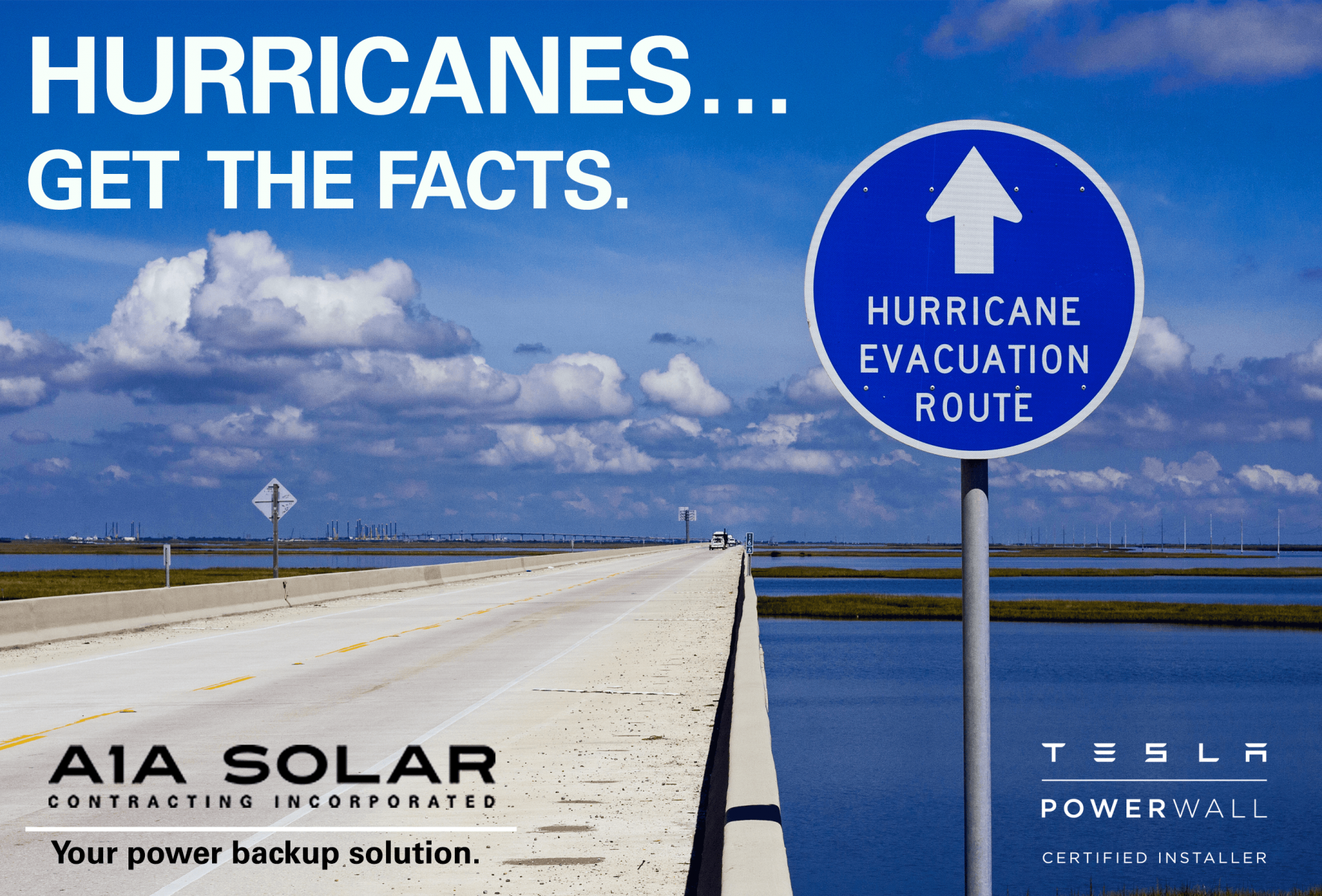
Hurricane Season

Hurricane season begins on June 1st and ends on November 30th. Summer’s hotter climate leads to warmer water which in turn forms hurricanes. Hurricane season , after cooler weather has started to roll in.
How Hurricanes Form

Hurricanes develop during interactions between warm air and warm water and can become the most violent storms on Earth. Also called typhoons or cyclones, the scientific term for all these storms is tropical cyclone. Only tropical cyclones that form over the Atlantic Ocean or eastern Pacific Ocean are called “hurricanes.” When the winds in the rotating storm reach 39 mph, the storm is called a “tropical storm.” And when the wind speeds reach 74 mph, the storm is officially a “tropical cyclone,” or hurricane.
Hurricane Categories

Hurricanes are measured according to a scale known as the Saffir-Simpson Hurricane Scale. This scale gives hurricanes a classification based on the average wind speed of the hurricane:
- Category 1 hurricanes have a wind speed of 74-95 mph
Category 1 hurricanes may be the weakest on the scale, but there is still a need for extreme caution. The winds are powerful enough to pound through a city and lightly pull apart buildings. This can form debris which is dangerous if it lands on people, pets or buildings. Power outages can also happen. - Category 2 hurricanes have a wind speed of 96-110 mph
The stronger the storm means greater potential for damage and danger. Hurricanes of this strength will bring flying debris, break windows and even uproot trees. Homes and buildings can fall victim to roof or siding damage while power outages lasting up to two weeks may follow. - Category 3 hurricanes have a wind speed of 111-129 mph
Category 3 hurricanes are beastly and strong enough to bulldoze past cities. Frame homes, mobile homes, apartment complexes and office buildings are at risk of major damage when a category 3 storm is on its way. You can prepare in advance by boarding up for protection. Destruction from flying debris is likely. Similar to category 2 storms, hurricanes of this strength can easily uproot trees and cause power outages lasting up to weeks after the storm. - Category 4 hurricanes have a wind speed of 130-156 mph
It’s important to plan an evacuation before a category 4 storm because it is strong enough to uplift roofs and trees, destroy mobile homes, frame homes, apartment complexes and other buildings. Power outages are extremely likely and can last months. - Category 5 hurricanes have a wind speed of over 157 mph!
As the highest level on the scale, category 5 hurricanes are, in simplest terms, devastating. They can level houses and destroy buildings of all sizes. Cities or islands on a category 5 hurricane’s path are likely to be uninhabitable for weeks to months due to the level of devastation.
How deadly are hurricanes?

How deadly a hurricane isn’t necessarily dependent on what category hurricane it is. Sometimes a Category 1 hurricane can be more deadly than a Category 3. It depends on how wide the storm is, how many storm surges it causes, and how much rainfall it gives off. Hurricanes cause most of their damage and death by means of flooding, high winds, high tides, and rip currents. If a lower-category hurricane is very wide, it might bring dangerous flooding to a huge swath of the country it hits, causing much more death than a smaller, higher-category storm.
Hurricane Terminology
Here are some common terms related to hurricanes.
- Eye — The eye of a hurricane is at the center of the storm and it’s also the storm’s most peaceful section due to the low air pressure and calm winds. Clouds are not present here either.
- Eye Wall — The hurricane eye wall is opposite of the storm’s eye because it’s the most dangerous part of the hurricane. This is where the heavy clouds and high-speed winds live.
- Rainband — The hurricane’s rainbands are spirals responsible for the storm’s heavy rainfall and flooding.
- Diameter — A hurricane’s diameter is measured from one side to the other.
- Storm Surge — A hurricane’s storm surge can have the most devastating impact on a city located along its path. They form when severe winds push toward the ocean’s shore, causing sea levels to rise significantly. This sends a catastrophic wave of water over any surrounding land. A storm surge is dangerous because they can produce waves reaching up to 20 feet. Storm surges can also extend for miles and miles, flooding cities
- Watch — A hurricane watch is slightly less severe than a hurricane warning because it means there is a chance hurricane conditions may occur within a certain area. You can expect to receive warning of a hurricane watch 48 hours in advance.
- Warning — A hurricane warning is put in place when certain areas are expected to experience hurricane conditions, such as winds of 74 mph or higher. Officials typically send out hurricane warnings 36 hours before winds strike.
Top States for Hurricanes

Florida, Texas, Louisiana, North Carolina and South Carolina. These are the top 5 states most likely to be on a hurricane’s path and it has everything to do with their proximity to all of the warm water found in the Gulf of Mexico or within the Atlantic Coast.
How To Prepare For A Hurricane?

Now that you know all about hurricanes, it’s time to prepare your family for the days leading up to the hurricane’s landfall. A great first step would to shop for non-perishables, organize a hurricane kit and board the exterior of your home.
Whether you are going to ride out a hurricane or evacuate, the damages as well as the power outages from a hurricane can last for weeks or more. A1A Solar has a range of power back up options including a combination of solar panels and Tesla Powerwall batteries which will help keep your home running smoothly even in long power outages.
We can help you stay powered up until sunny skies are out again…
Concerned About Power Outages?
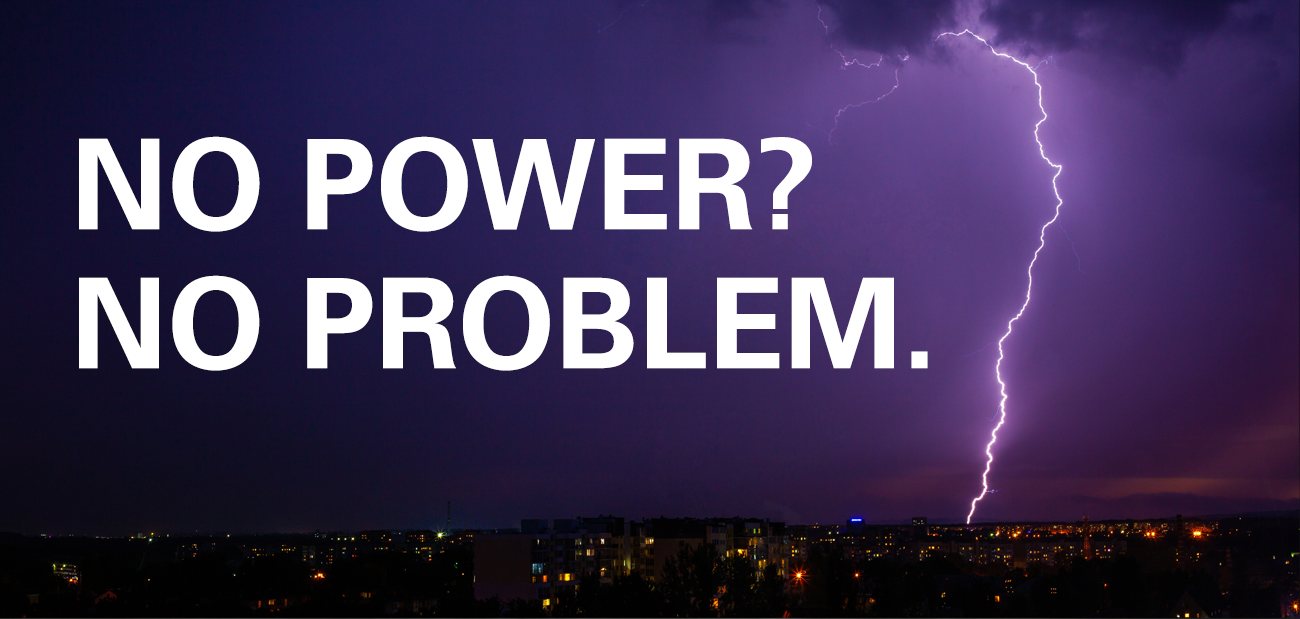
 As we head into hurricane season, power outages become a concern. Power outages can be caused by many circumstances. An outage, or “blackout,” occurs when something interrupts the flow of electricity to the end-user, and an outage can affect a few homes or an entire city —sometimes lasting for days.
As we head into hurricane season, power outages become a concern. Power outages can be caused by many circumstances. An outage, or “blackout,” occurs when something interrupts the flow of electricity to the end-user, and an outage can affect a few homes or an entire city —sometimes lasting for days.
Here are some of the things that can cause your power to go out:



Other Causes of Outages
- Vehicle Accidents — If an automobile accident to involve a pole, knocking it over or damaging the power line.
- Small Animals — Squirrels and other small animals have been known to chew through power lines, which can result in the electrocution of the animal and a quick surge of electrical power that damages the power line and causes an outage.
- Falling Trees & Branches — Falling trees and branches which land on power lines are a recurring cause of power outages. Trees can also trigger outages if they’re growing directly below a power line.
- Snow & Ice –– Fortunately in the Southeastern U.S. this is not that much of an issue

Whatever the reason for losing power, A1A Solar has a range of solutions to meet your needs from solar panels to back up batteries, we offer whole home power solutions. Plan ahead! Contact us today to discuss what is best for you.
Are You Prepared?
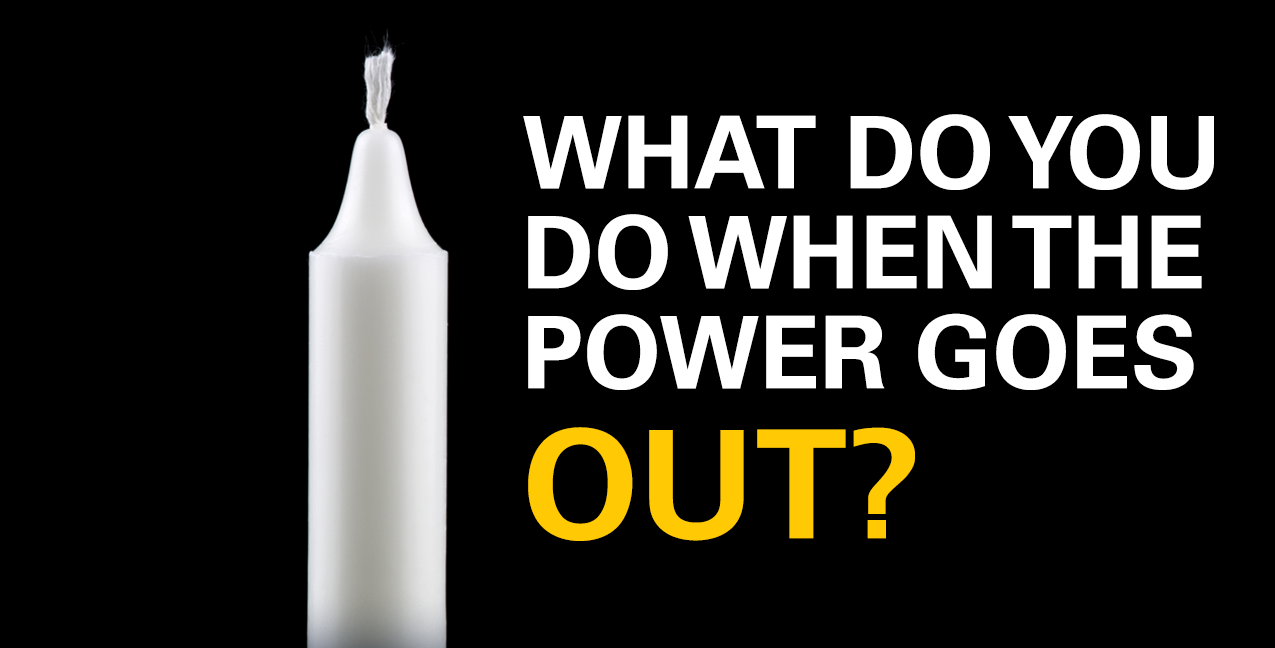
 When the Grid Goes Down… Are You Prepared?
When the Grid Goes Down… Are You Prepared?

An outage lasting longer than a few days would be almost unbearable.

If you already have a solar system installed, the next step is to add battery storage. If you don’t have solar on your home yet, you can add a PV system and a battery together, or you may opt for a whole-house generator.
A1A Solar Can Help

When the grid goes down, if you have a battery backup system and solar, your home has power. During the daytime, your solar array meets the energy needs of the house, with the excess stored in the battery. At night, you draw from the battery, and the next morning when the sun comes up, the process starts all over again.




A1A Solar answers your commercial solar questions

 You may have heard that many Fortune 500 companies are going solar. The benefits to clean energy are certainly numerous; however, taking your company solar may seem overwhelming. A1A Solar is ready to help you invest in your company and begin reaping the rewards of a commercial solar energy system. Here are some frequently asked questions to help you understand the process of going solar.
How do solar panels work?
Solar panels absorb sunlight with photovoltaic cells and use an inverter to change direct current power to alternating current power. This conversion creates electricity for commercial use.
How long do solar panels last?
Standard solar panel warranties last 25 years. A typical central inverter will last between 10 and 15 years, meaning you’ll have to replace it at some point during the lifetime of your solar panels.
What is commercial solar and why should I have it?
Commercial solar is a solar power system for companies. It’s different from residential solar in that residential applies to individual homes. The benefits of commercial solar occur on a much larger scale than residential solar.
The main reason companies invest in commercial solar is to save money in the long run. The annual energy cost for a business grows by about 3% each year. When you no longer have to pay that fee, you end up saving a great deal of money. It typically takes six to seven years to begin to see a return on your investment. In addition to the money your company saves on energy bills, with a solar energy system, you receive a 30% tax credit with accelerated depreciation.
Another important reason companies invest in commercial solar is to show their customers their commitment to helping the environment. Solar panels do not emit pollution into the atmosphere.
Is going solar feasible for small and medium companies?
Most definitely. More and more small- and medium-business owners are going solar as they realize the financial opportunities that come with it. Don’t let the size of your company be the deciding factor. There’s always an opportunity to save money for your business in the long run, no matter the size.
How do I know what size system to select for my company?
First, decide how much electricity your company uses. Having a 12-month usage history and an idea of when you use your energy can help you figure this out. Assess your budget for the solar panel system and the remaining electricity bill. One of our solar professionals can help you pick a system that fits your company’s needs.
What is net metering?
Net metering allows you to use generated electricity anytime you want, instead of right when your system generates it.
You may have heard that many Fortune 500 companies are going solar. The benefits to clean energy are certainly numerous; however, taking your company solar may seem overwhelming. A1A Solar is ready to help you invest in your company and begin reaping the rewards of a commercial solar energy system. Here are some frequently asked questions to help you understand the process of going solar.
How do solar panels work?
Solar panels absorb sunlight with photovoltaic cells and use an inverter to change direct current power to alternating current power. This conversion creates electricity for commercial use.
How long do solar panels last?
Standard solar panel warranties last 25 years. A typical central inverter will last between 10 and 15 years, meaning you’ll have to replace it at some point during the lifetime of your solar panels.
What is commercial solar and why should I have it?
Commercial solar is a solar power system for companies. It’s different from residential solar in that residential applies to individual homes. The benefits of commercial solar occur on a much larger scale than residential solar.
The main reason companies invest in commercial solar is to save money in the long run. The annual energy cost for a business grows by about 3% each year. When you no longer have to pay that fee, you end up saving a great deal of money. It typically takes six to seven years to begin to see a return on your investment. In addition to the money your company saves on energy bills, with a solar energy system, you receive a 30% tax credit with accelerated depreciation.
Another important reason companies invest in commercial solar is to show their customers their commitment to helping the environment. Solar panels do not emit pollution into the atmosphere.
Is going solar feasible for small and medium companies?
Most definitely. More and more small- and medium-business owners are going solar as they realize the financial opportunities that come with it. Don’t let the size of your company be the deciding factor. There’s always an opportunity to save money for your business in the long run, no matter the size.
How do I know what size system to select for my company?
First, decide how much electricity your company uses. Having a 12-month usage history and an idea of when you use your energy can help you figure this out. Assess your budget for the solar panel system and the remaining electricity bill. One of our solar professionals can help you pick a system that fits your company’s needs.
What is net metering?
Net metering allows you to use generated electricity anytime you want, instead of right when your system generates it.
Solar panels vs. solar water heaters
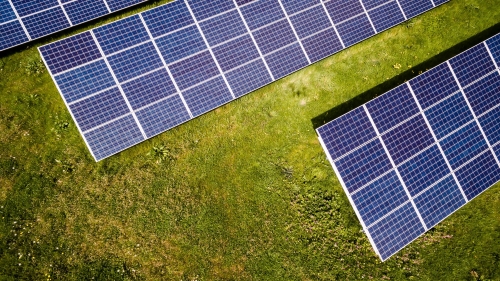
 What is the difference between solar panels and solar water heaters?
What is the difference between solar panels and solar water heaters?
While most people know what solar panels look like, they might not know their exact purpose. Solar panels convert sunlight into electricity through the photovoltaic effect. This process happens when panels absorb photons, which creates an electric current. When photons hit the crystalline photovoltaic cells, it generates DC energy. Below is a diagram that shows how the panels absorb sunlight and how it becomes energy.
 DC and AC conversions meet the power needs of a home or company, creating a seamless connection between solar and utility. Net-zero is when the total amount of energy a building uses is roughly the same as the amount of energy its solar system creates. Being net-zero can help to reduce your energy bill up to 90%.
DC and AC conversions meet the power needs of a home or company, creating a seamless connection between solar and utility. Net-zero is when the total amount of energy a building uses is roughly the same as the amount of energy its solar system creates. Being net-zero can help to reduce your energy bill up to 90%.
 Solar water heaters use a different process to create energy. Solar panels heat water that then flows to a tank that stores it until you use it. In order to keep your solar water heater clean, you must flush it once a year.
The difference between solar panels and solar water heaters is simply the purpose of each. Solar panels create electricity and solar water heaters use the sun to heat up water, which is then pumped into your home.
Solar water heaters use a different process to create energy. Solar panels heat water that then flows to a tank that stores it until you use it. In order to keep your solar water heater clean, you must flush it once a year.
The difference between solar panels and solar water heaters is simply the purpose of each. Solar panels create electricity and solar water heaters use the sun to heat up water, which is then pumped into your home.
Commercial Solar System
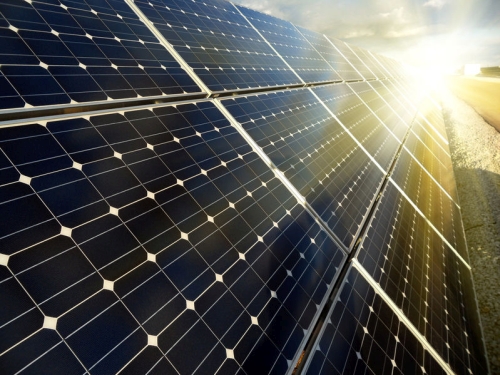

Getting a commercial solar system set up in Northeast Florida
6 steps to ensure your company’s solar system installation is a success
Your company is ready to go solar. That’s great! However, you might feel overwhelmed by what to do to get started. Read on to learn how to get a solar energy system installed for your company.
1. Make sure your company owns the property. This step is essential. You won’t be able to add a solar energy system if you don’t own the property.
2. Select a solar energy company. Ensure the company you choose is certified and licensed, so you receive a quality installation.
3. Meet with representatives from the company. The solar system contractor will set a meeting to evaluate your company’s property and find the best spot to install the solar energy system. Then, the company will work with you to develop a plan for your system.
4. Dealing with bureaucracy. After the plan is complete, the solar energy company will contact your electricity provider to seek approval. Your solar energy system essentially adds to existing systems on the grid, so the electricity provider needs to be aware of how your plan works. Be prepared to alter your plan to suit the electricity provider’s requirements.
Your solar system contractor will also contact your local government representatives to get the required permits and inspections.
5. Begin the process. Once your electricity provider approves the plan, your solar energy company will begin implementing your system. It usually takes a few months to get your solar energy system online, so make sure you’re allocating enough time for this step.
6. Another inspection. Once the process is complete, the local government will send another inspector to make sure the system is up to code and meets plan specifications.
Getting your company set up with a solar energy system isn’t hard. Your solar energy company will handle most of the heavy work, including dealing with bureaucracy. The only truly difficult part is having to wait for your system to be complete so you can enjoy it. Once it’s done, your company will reap the benefits.
Do solar panels work in the rain?

How does the weather affect your solar energy system?

How to prepare your solar energy system for winter in Florida

Get your solar energy system ready for winter
Winter is the most difficult time of the year for solar energy production. In some areas, snow covers solar panels and clouds hide the sun, both of which reduce energy output. While solar energy system owners in northeast Florida typically don’t have to worry about snow, they should make preparations to deal with the decreased amount of sunlight during the day and for cloudy days that are common during winter. Making these adjustments is important for your solar energy system to continue working optimally.
During the winter months, the days are shorter, which means that energy production will be less. In order to compensate for this problem, you should change the angle of your solar panels. The way you should angle your panels depends on your location. Check out this website and put in the country, state, and city you’re in to get the best angles for your system for each month in winter.
When clouds cover the sky, it reduces your solar energy system’s production significantly. Your system makes up to 25 percent less energy on an overcast day than on a sunny one. Unfortunately, there’s no way to swat clouds out of the sky or increase the system’s production rate to compensate. You’ll have to wait it out.
If you depend on your solar energy system to power appliances or electronics that run continuously, such as your refrigerator and computer equipment, it’s a good idea to invest in a solar energy battery. This way you can ensure that even on cloudy days, you have uninterrupted power.Because Florida winters are usually mild, taking a few precautions should ensure that your solar system performs well during the winter. If you need help adjusting the angle of your solar panels for winter or would like to buy a solar energy battery, we’ll be happy to help you.


